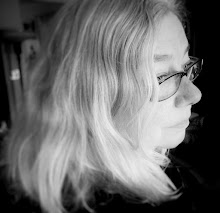A couple of weeks ago, I put in a Knit Picks order. Seeing that their book sale was still on at the time, instead of just ordering the circular needles I needed, I also ordered two books. One of the books is “Wrapped in Lace” by Margaret Stove; I’ll review that one another time. The second book, the one I’m reviewing today, is “Knitting Brioche” by Nancy Marchant.
First impression? This is a visually beautiful book. It’s inviting. The book has five sections and the page colours are different for each section, making it very easy to find each. I’ve done a little brioche knitting in the past (I made a vest for John, a Nancy Marchant pattern from Interweave Knits… years back). It’s a reversible fabric that can be quite warm. It’s more known in Europe that it is here in North America. In texture, it’s very similar to Fisherman Rib, but the technique is different.
The description of the book (from the back cover) reads as follows:
Knitting Brioche is the first and only knitting book devoted exclusively to brioche stitch, a knitting technique that creates a double-sided fabric. This complete guide will take you from your first brioche stitches to your first (or hundredth) project, and even to designing with brioche stitch, if you desire. Whether you’re new to brioche knitting or experienced at “brioching”, author Nancy Marchant provides the information and inspiration you need.
Ms. Marchant includes a new set of abbreviations and symbols for brioche knitting and the first section includes a description of all of these. For instance, brk (or bark) is brioche knit, brp (or burp) is brioche purl. For the symbols for brioche knitting, Ms. Marchant was inspired by Japanese knitting symbols. All of the explanations constitute the first section of the book.
The second section is a step by step journey through brioche knitting, going from the plain brioche stitch in one colour, casting on and off, working brioche in the round to doing it all in two or more colours.
The third section is a brioche “stitchionary” that includes approximately 50 pages of different stitches. The fourth section explains design elements in brioche knitting, including points, lines, form (motifs), texture, and colour.
The fifth, and final, section contains patterns, some of which are highlighted in the above photo.
Yesterday, I started to work my way through the book, knitting the pink swatch in the top picture. Ms. Marchant’s instructions are clear, well-written and well illustrated.
This is not just a book of patterns by any means. In fact, the patterns almost feel secondary; she had to include some patterns to go along with the instructional part of the book. This book is primarily a primer on brioche knitting and, as such, it’s a magnificent resource. I’m very happy to have it in my knitting library.











